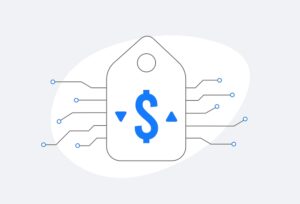 I once worked for a satellite provider that wanted to win over cable subscribers. The problem? We didn’t know what those customers wanted.
I once worked for a satellite provider that wanted to win over cable subscribers. The problem? We didn’t know what those customers wanted.
To get inside subscribers’ heads, we used interviews, installation ride-alongs, and focus groups to fuel the creation of a customer experience pathway. This is an illustrative diagram that plots the points in a customer’s interactions and experiences with a brand, be it a product, a service, or a combination, as was the case with this client.
Our customer experience pathway, also sometimes referred to as a customer journey map, helped us identify opportunities to provide better service. Over the next 18 months, we implemented a myriad of changes that had an overwhelmingly positive impact on the business and greatly enhanced customer satisfaction, among them providing better customer educational materials, removing inconsistent promotional offers, and streamlining the replacements of lost or broken remote controls.
As you can tell, this effort involved practically every facet of the organization — IT, programming, customer service, marketing, customer acquisition, etc. That’s the magic of this process. Journey mapping allows you to see brand interactions from the customer’s point of view by focusing on the full spectrum of experiences, from initial awareness through advocacy. And it allows every business unit to collaborate for the betterment of such customer experiences.
Customer experience pathways are powerful tools for improving customer service because they help you identify high and low points in consumers’ interactions with your brand and adjust accordingly.
They also give you the opportunity to remove ego from the equation — let’s face it, when you’ve had a hand in creating an experience, you’re a little biased about the product or service. The customer journey map neutralizes any hubris and permits you to see the customer’s experience with a fresh perspective.
Lastly, it allows you to refocus your return on investment efforts. While it’s great to have a snapshot of the customer’s view of brand interactions, it’s also good to get a sense of how your business units are delivering.
They will look different for every company, but no matter what industry you’re in, you can glean insights from these journey maps and use them to improve your business. Here’s how:
- Assemble your team. Start by bringing key personnel on board. The pathway is meant to be comprehensive, so your team should be diverse. Get representatives from every division to contribute. They will provide multiple perspectives and help you achieve buy-in later. Remember to include team members from departments that don’t interact directly with customers. After all, every division ultimately has something to do with customer service.
- Determine customer goals. After you’ve gathered your team, use its expertise to identify the stages of your company’s sales funnel. Sales funnels follow a general pattern from awareness and interest to purchase and evaluation, but they look different for every business. For example, the consideration phase for choosing a restaurant is significantly shorter than the consideration phase for choosing a car.
Once you’ve determined your sales funnel stages, identify customers’ goals at each stage. Consider their feelings, motivations, and questions. When do customers become aware of your brand, and what piques their interest? As they consider a purchase, what information do they need?
I suggest laying these out in a table with a column for each stage and a row for each customer persona. Use quantitative and qualitative research to avoid guesswork. Surveys, user feedback, phone transcripts, and emails may be helpful. Also, it’s important to focus on customer goals, not your own. If you don’t understand their goals first, you can’t meet yours.
- Plot touchpoints. A touchpoint is any physical or digital interaction with your brand. This includes your website, your customer service representatives, and even your company’s social media profiles. Multiple touchpoints exist within each stage of the sales funnel, and customers have repeated interactions with certain touchpoints.
Create a comprehensive list of your company’s touchpoints. When, where and how does each happen? What are the crucial functions of each? Compare this to customer goals at the stages of the sales funnel. Which goals do each touchpoint support? Are any goals not supported by your existing touchpoints? If so, that’s a serious gap to address.
- Evaluate and repeat. After identifying which goals each touchpoint supports, you need a system for evaluating their effectiveness. Use surveys, feedback, focus groups, and quantitative data to assess whether customers are accomplishing their goals.
Build these assessments into the rhythm of your company. Your initial evaluations will help you identify weak spots and provide benchmarks for improving service over time. Subsequent evaluations will track progress and catch problems as they arise.
Mapping the customer journey will reveal gaps in your customer service efforts, but constant technology and market shifts mean customer pathways are continually changing. So revisit the journey map regularly. Reassemble your team and repeat these steps to ensure you never lose sight of the customers’ point of view. By helping them meet their goals, you’ll find you meet your own.
Amber Bezahler is a marketing consultant and advisory council member of the THINK School of Creative Leadership.



 Network
Network

